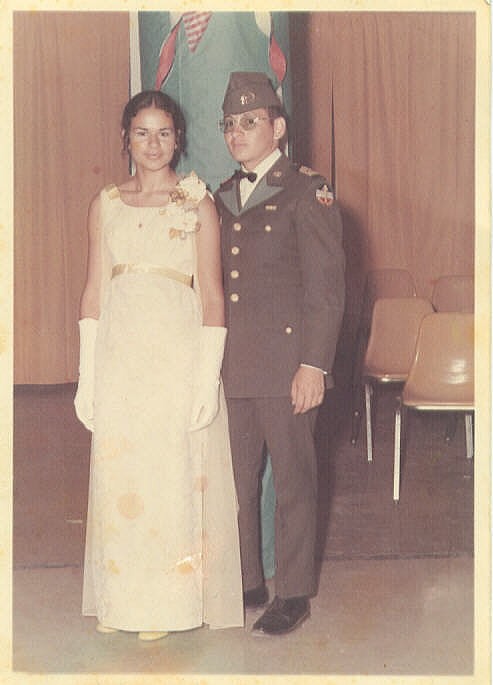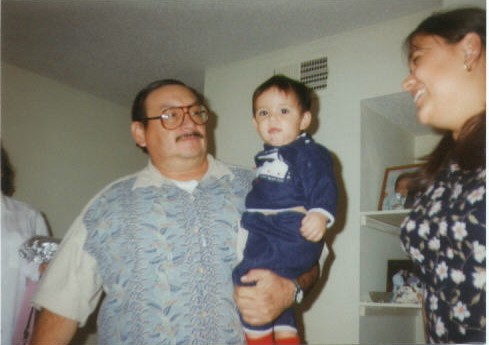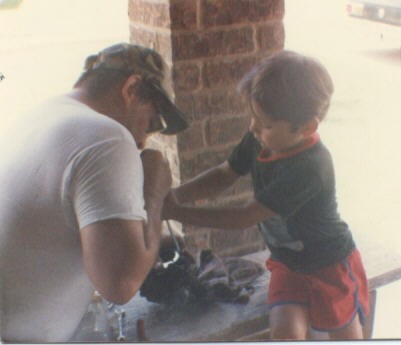Juan Antonio Sandoval


When was the first time you decided to leave home?
I left home in 1972 to see my cousins in Chicago, Illinois.
Were you going to see your cousins for a visit?
No, I was going to look for work.
Where did your cousins work in Chicago?
They worked at Inland Steel.
During 1972, were there jobs in Laredo?
Yes, there were jobs but I wanted to leave Laredo.
Were your cousins expecting you?
No! It was a surprise trip.So how did you leave Laredo Walking! Very, very SLOWLY!
Had you already calculated the distance from Laredo, Texas to Chicago, Illinois that
is a long distance?
I did that a long time ago. I've known that for the longest time.
How far is the distance between the two?
Between 1,300 to 1,500 miles
Did you have a route planned out?
IH 35 from Laredo to Oklahoma City. In
Oklahoma City, Oklahoma..
44 East to 57 North. 57 North would take me
straight into Chicago..
Did you have any money on you?
No, I was broke.
How far did you get on foot?
I caught a ride on the other side of San Antonio to Dallas and then Dallas to Ardmore,
Oklahoma.
Were you hitchhiking?
I was walking and they would stop an offer me a ride and in Ardmore, Oklahoma
the driver gave me $10.00...I helped him drive 12 miles
You knew how to drive tractor trailers?
Yes.
Did you learn from my grandfather?
Yes, I learned from your grandfather and I had my license to drive those trucks.
What happened next?
In Ardmore, Oklahoma I was picked up by a farmer and he dropped me off outside of Oklahoma
City and I started walking and outside of Oklahoma City I got stopped by the city police. They
asked me for my ID card and they asked me if I had any money. I said, "No," and they put me in
jail for vagrancy. According to them $40.00 in your pocket would have kept me from being labeled
as a vagrant. I spent my $10.00 on the only food I had in a few days. They put me in jail over
night. When I was released they drove me to the Texas Oklahoma border and they instructed me to,
"Go South and don't come back."
How were you treated?
When they were finger printing me and in the jail cell the officer made several deragatory
comments about Hispanics and Mexicans.
Would you like to add anything else?
No.

I learned from this interview about my father's loyalty to the United States. Growing up he always stressed the importance of the United States and what it means to live here. His experienece in Oklahoma with racism was not the first or the last. He is one of the truest United States citizens at heart. One of his heroes is Gen. George S. Patton. This assignment has been one of the most difficult to end. There was so much information and I found it difficult to edit most of it. I learned about a few training exercises and other survival and warfare skills. Conducting an oral history is very challenging. It is important to research the topic and prepare for the interviewee. It is much more challenging than writing a research paper. The benefit to learning the past through the interview process is the interviewee is present in order to ask questions that a book could probably not answer. The drawback is the interviewer cannot contradict the interviewee becasue the interviewer is recording their perspective of the occurrence. Another drawback is that their recollection may not be so accurate. This has been an effective way of learning about the past because before I only had bits and pieces about a part of my father's life.

LAREDO, Texas. http://www.tsha.utexas.edu/handbook/online/articles/view/LL/hdl2.html. The Handbook of Texas Online.Laredo.
Laredo, Texas (map). http://www.laredochamber.com/maps-weather.htm. The Laredo Chamber of Commerce Online.
Fort Hood, Texas. http://www.tsha.utexas.edu/handbook/online/articles/view/FF/qbf25.html THe Handbook of Texas Online. Ft. Hood.
Oklahoma City, Oklahoma. http://www.usatoday.com/weather/TWC_Images/us_okc_closeradar_medium _usen.jpg. Maps Online. Oklahoma City.
Neumann, Franz; The Rule of Law: Political Theory and the Legal System in Modern Society, Dover, N.H.: Berg, 1986. Franz discusses the rule of law, the law philosophy and sociological jurisprudence.
Fort Polk, Louisiana. http://www.jrtc-polk.army.mil/about-polk.asp. Department of Defense Online.